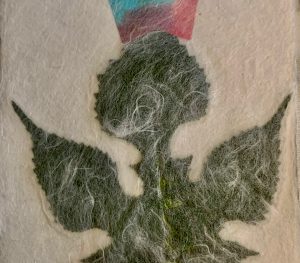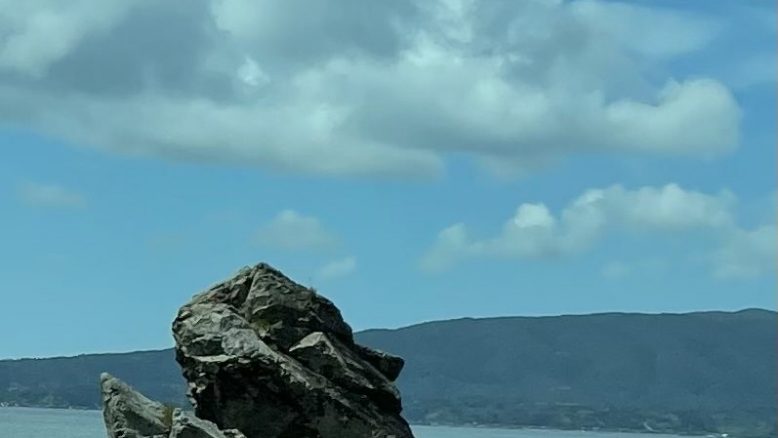A famous facial profile in the tide-worn rock formation served as introduction to threads woven by archeology, loom, press and imagination. There a mulberry bush, there a thatch roof, there a silkworm, there the strands of remembrance. With apologies to Elton John and all the stories he shared we launched into the exploration. Walking across the suspension bridge the clear mountain water dancing across the rounded granite promised a visual feast. A treat. Walking into Shirakawago village the size and scale were more than promised by brochures, websites and tour guides. The stacks of thatched grasses bound and pruned into rigid 1/3 metre layers that could withstand snow, rain and wind were a poke in the eye.
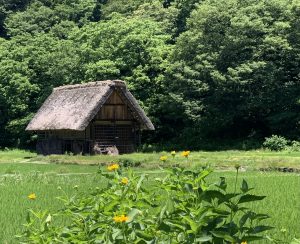
The visit to the largest of the houses revealed a home based industry. For years before the turn of the last century the loft of the major residence was used to breed and grow silkworms and then spinning the fibers into silk for weaving into prized fabrics.
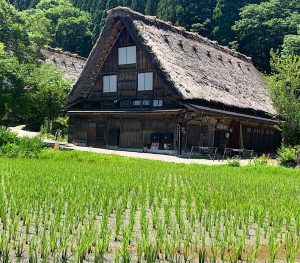
The currency of the rice planting and the active tourist services hint at this site being more than heritage, this is a living monument and the standing stones speak of the past with lines tying them to the future.
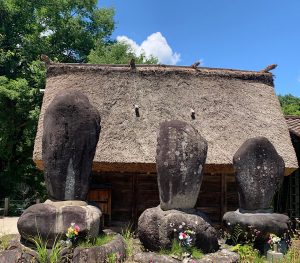
A leaf embedded in a new sheet of paper made at the Gokayama paper plant waves enfolding arms beneath a crown. This is no bleached pulp, pulp and paper mill. This is bark stripped, mulberry trees steamed, to extract fibers that are blended into a slurry that is strained, layered, dried and vacuum assembled into paper. The unifying theme might be the mulberry leaves used for silkworm feeding and the paper fiber embedded in the hand made papers. You knew I was going to string it all together.
